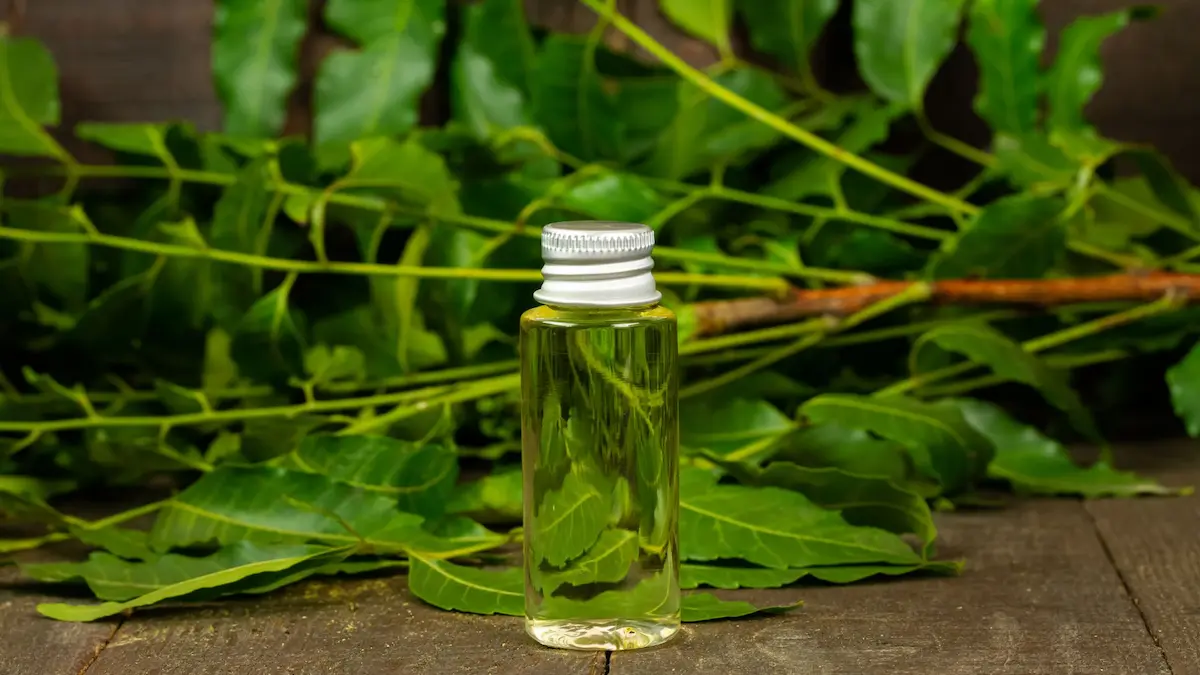Your cart is currently empty!
How To Use Neem Oil on Plants
Wondering how to use neem oil as a natural fungicide on plants? Find out below.
Neem oil is a vegetable oil that, in addition to its many benefits, protects plants from insects, mites, or fungal infestations. It is completely safe to use, and won’t harm people or animals or endanger wildlife in any other way. Read on to learn how to use neem oil as a natural fungicide on plants.
What is Neem Oil and How Does It Work?
In short, neem oil is a natural pesticide found in the seeds of the neem tree. It is mainly used as a preventive method and as a control measure against pest infestation. It kills a wide variety of insects, such as aphids, mealybugs, spider mites, nematodes, etc. But please recognize the difference between beneficial insects and bad bugs.
However, did you know that neem oil is a natural fungicide? This oil can help you get rid of those troublesome diseases such as powdery mildew, black spot, scab, anthracnose, and leaf spot. It is completely safe to use, but it is important to use it only in the morning or evening as the combination of neem oil and direct sunlight can cause burns on your plants.
How To Use Neem Oil as a Natural Fungicide On Plants
What you will need:
Equipment & Materials
- Garden or spritz sprayer
- Up to 2 tablespoons of neem oil
- 1 gallon of water
- Up to 2 tablespoons of dish detergent
Step By Step Guide
Step No. 1: Make a solution of water & detergent
Since it’s oil, it’s to be expected that neem won’t combine so easily with water. Therefore, an emulsifying agent, more specifically a mild dish detergent, will come to your aid here.
As for the preparation process itself, you should mix dishwashing detergent with warm, not hot, or cold water in the garden or spritz sprayer and shake well.
We want to introduce you to the fact that diluted liquid soap works as an excellent DIY pesticide that has incredible power to get rid of aphids and other soft insects when applied (sprayed) directly to them.
Step No. 2: Adding the neem oil to the solution
After thoroughly mixing the water and dishwashing the detergent solution, it’s time to add the miracle neem oil. Simply open the lid and slowly pour in the oil, then shake well again to mix all three components as well as possible.

Step No. 3: Application to affected areas
We recommend doing a patch test first. Apply the solution to one small area of your plants and wait at least 24 hours to see if there is any damage. If there is no damage to the treated areas after 24 hours, you have the green light to apply the solution to all affected areas.
Mist all plant surfaces thoroughly, even the tops and undersides of the leaves until completely wet and dripping. If you have sensitive skin, it would be wise to use protective gloves to avoid possible irritation.
Step No. 4 Reapply as needed
This last step is also a preventive measure. Experienced gardeners recommend avoiding skipping this step as it discourages pests from returning to the “crime scene”. Neem oil should be applied on a schedule of 7 to 14 days, depending on the conditions.
Abstract
Since it is obtained from the neem tree, it doesn’t cause harmful effects on pollinators. Its action is directed exclusively at bugs that feed on plant material. In addition, it is an excellent alternative for people with various skin conditions such as psoriasis or dry skin. Best of all, harvesting can resume much sooner than when using chemical insecticides and fungicides.
This is a great way to protect your plants without putting yourself at risk! That would be it. Now you know how to use neem oil as a natural fungicide on plants. If you have questions, contact us today!
Author’s bio
Tony Manhart is the founder and editor in chief at Gardening Dream. Tony’s enthusiasm and rich experience in all things related to growing plants have led him to share his knowledge with gardening aficionados all over the world. When he is not working around his garden, Tony spends his time writing tips and tricks on various subjects related to plant cultivation and soil maintenance.
Share with Family and Friends
Featured Authors
Visit a Botanical Garden For Unique Experiences.
Comments
Logging in to comment gives you more features, but it is not required.
Subscribe
0 Comments
Oldest












